【金融の歴史04】金貸しとテンプル騎士団
表向きはエルサレム巡礼者の保護を目的に組織された義勇軍であるテンプル騎士団(Knights Templar、正式名「キリストとソロモン神殿の貧しき戦友たち」)。
しかし兵士のうち実戦に赴く者はごく一部であり、その他の人間は何をしていたかといえば、現代の役所勤めや会社勤めと大差ない。潤沢な資金と土地に恵まれた彼らが事実上、金融業者に変身していくのは自然な成り行きだった。
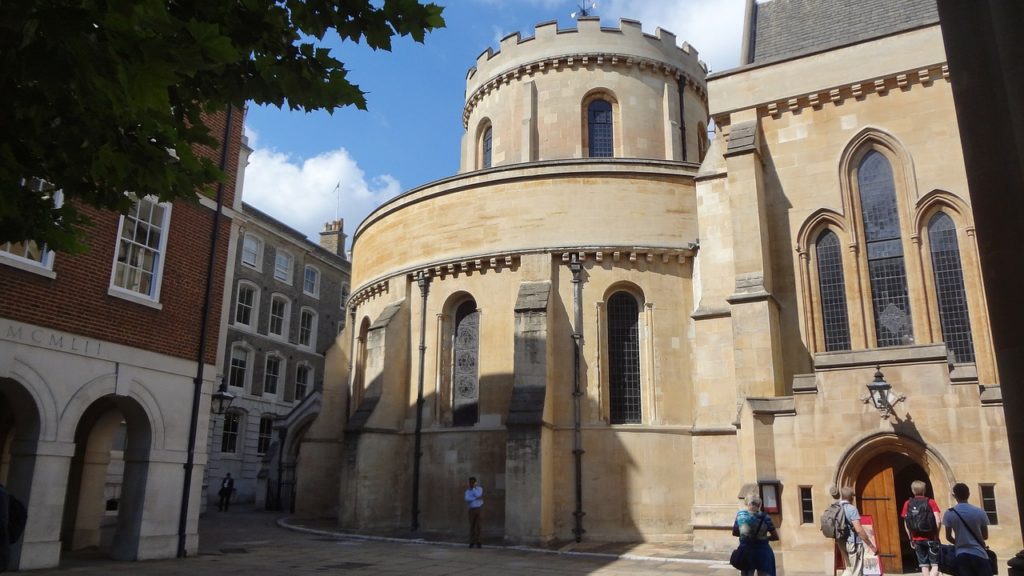
今回はメディチ家などにお株を奪われているが、実はこちらの方が先輩バンカーだったとされるテンプル騎士団に関する記事を紹介しよう。
金貸しとしてのテンプル騎士団
There is an awful lot of confusion about the Knights Templar and the way they operated as bankers and money lenders. How could they have been involved in banking when usury was a divine sin? What was their relationship with the Jewish lenders?
テンプル騎士団と彼らの銀行家や金貸しとしての側面については多くの誤解があるようだ。利子が神の罪であった時代、彼らはいかにして銀行業に関わて行ったのか?ユダヤ人の金貸しとの関係はどうだったのか?
利子を禁じた古代宗教の金融観
The first thing to say is that in ancient and feudal societies, there was often a rather sniffy attitude towards earning a living through trade – and certainly through usury. Charging interest on loans was seen as a form of theft or deception. In the Koran, it’s described as the work of the devil. Assuming various mistranslations of the Christian bible, it seems to be roundly condemned in both the Old and New Testament.
最初に指摘しておきたいのは、古代から封建時代を通じて、商売で生計を立てること、とりわけ利子をとって儲けることは社会的に蔑視の対象だったことである。貸したおカネに利子を課す行為は、泥棒か詐欺の一種と見なされていた。コーランでは悪魔の所業とされていたし、キリスト教の聖書においても、さまざまな誤訳はあるにせよ、旧約、新約を問わず利貸しは非難されている。
The Torah makes a distinction between interest deducted before the loan is handed over and interest deducted afterwards. What is clear – as with so much of the Old Testament – is that many prohibitions applied within the Jewish community did not apply outside. In other words, there was a loophole allowing interest to be charged to gentiles because…well….they’re gentiles. But Jews could not charge other Jews interest.
However, the main reason that usury became associated with Jewish communities was that members of this religion were often barred from the professions and membership of the trade guilds – so they had to make a living somehow.
ユダヤ教のトーラーでは、貸し出し前に計算される利子と、貸し出し後に算出される利子を区別している。旧約全体にいえることだが、利子の禁制はユダヤ・コミュニティのみに適用され、コミュニティ外には適用されない。つまり、この戒律には抜け穴があって、異教徒からだったら利子をとってもよいのである。理由は・・・異教徒だからとしかいいようがない。もちろんユダヤ人がユダヤ人に利子を課すことは絶対ダメである。
しかしイメージの中で高利貸しとユダヤ人が結びついたのは、ユダヤ教徒が商人の組合に入れてもらえなかったせいであろう。彼らはカネを貸して生計を立てるしかなかったのである。
ユダヤ教の聖典。モーゼが神から授かった律法について書かれた、いわゆるモーセ五書―「創世記」「出エジプト記」「レビ記」「民数記」「申命記」―を指す。
For Christians – brought up with the stark image of Jesus driving the money lenders out of the Temple (a story that has been opened up to other interpretations by scholars in recent times) – there could be no usury, or so it seemed.
金貸しを神殿から追い払ったイエスの厳格なイメージの下に育ったキリスト教徒はどうかといえば、金貸しなんてありえない存在だった。少なくても建前の上では。
中世における金融業の誕生と信用取引の一般化
The thing was that medieval monarchs, barons, traders and pilgrims needed loans. As the economy of the Middle Ages became more sophisticated, this ban on usury became an obstacle to growth and the easier movement of goods. The whole economy could not rely solely on Jewish lenders for credit and so we see banking groups emerge in northern Italy and credit arrangements at trade fairs across Europe.
しかし実態はどうか。中世の君主、臣下、商人、巡礼者―、彼らはみな融資を必要としていた。中世経済が複雑化すると、利貸しの禁制がかえって経済成長や流通の発達の障害となった。経済全体がユダヤの信用貸しに頼るわけにもいかない。そのためイタリア北部に金融グループが生まれ、ヨーロッパ中の見本市で信用取引が一般化していったのである。
テンプル騎士団
And then there were the Templars. A lot of their members came from aristocratic backgrounds and when they joined, they turned over their wealth to the order. Or sympathetic lords made vast donations – including one ruler of Aragon who turned almost his entire kingdom over to the Order though that was whittled down a bit after his death.
But essentially, the Temple was sitting on vast piles of land and bullion by the thirteenth century. Their hundreds of thick walled preceptories were not just places of worship but banks as well.
そこへ登場したのがテンプル騎士団であった。騎士団のメンバーはその多くが貴族出身で、加入時、自分の財産を団に寄進した。団を応援する君主や領主も多大な寄進を寄せた。アルゴンの王などは王国をまるごと騎士団に預け、最終的には領地を少し減らしたくらいの熱の入れようであった。
13世紀になると、騎士団は広大な土地と莫大な財産を管理する立場になった。何百もある支部は厚い壁に囲まれていたが、そこは礼拝の場所ばかりでなく金庫も兼ねていた。
This sprawling network of preceptories across Europe and the Middle East allowed the Order to offer a way for people to become more mobile without fear of losing their wealth. So, if you were a pilgrim going to Jerusalem or a crusader off to fight Saladin, you could deposit physical wealth and land deeds with the Order. You could then withdrawals whenever you needed – subject to what could be described as bank charges.
ヨーロッパから中東にかけて無秩序に広がった支部ネットワークの存在は、人々にとって富を奪われる心配なく移動できる自由を意味した。エルサレムに行く巡礼者であろうと、サラディンとの戦いに臨む十字軍兵士であろうと、かさばる私財や土地権利証は支部に預けばよい。預かり料を払えば、いつでも好きなときに引き出せる。
イスラム中世の英雄。エジプト・アイユーブ朝の始祖。1187年のハッティン(ヒッティーン)の戦いでキリスト教徒の十字軍国家「エルサレム王国」を破り、聖地を奪回した。アルメニアのクルド族の出身。
The added bonus of dealing with the preceptories was that you knew you were leaving your money in a heavily guarded place. Nobody was going to come and rob the place because it also housed the most fearsome knights in Christendom. Rather like having barracks inside your local branch of Citibank.
財産を騎士団の支部に預けるメリットは、預けた財産は軍隊の厳重な護衛付きで守られる点である。キリスト教世界でも最強の精鋭が常駐する場所に、あえて盗みに入る者などいない。いまで言うなら、シティバンクのなかに兵舎があるようなものだ。
北イタリア金融資本の興隆
As I mentioned, there were banking groups emerging in Italy in the early Middle Ages and one of the families that would become major bankers would be the Medici. This family would also provide great rulers like Lorenzo de Medici and…..popes. So being involved in banking/usury would not be a barrier to advancement in the church.
先ほど中世初期の北イタリアに金融グループが生まれたといった。そのなかでも頭角をあらわしたのがメディチ家である。この家系からはロレンツォ・デ・メディチのような有力政治家から法王まで多くの人材が輩出されたが、その栄光のおかげで金融や利貸しが教会での昇進を妨げることは事実上なくなったのである。
教会公認の利貸し?
All of which leaves the question – why didn’t the church condemn the usurious activities of the Templars and other Christian money lenders? One website I read this week suggested that the church “forgot” about the rule against charging interest. This is nonsense. What the church did – in its cynical and calculating way – was to suggest upper levels of interest that could be charged beyond which the lender would be acting unethically.
それにしても疑問は残る。 なぜローマ教会は、テンプル騎士団やメディチなどキリスト教徒の金貸しを非難しなかったのか?今週訪問したサイトでは「教会が利子の禁止を忘れていた」という迷答があったが、そんなはずがない。教会は金利に上限を設けたのである。シニカルかつ計算高い方策ではないか。では上限は何%か。貸し手が非倫理的に行動しはじめるだろうと教会が思うラインである。
重債務国王の悪計による騎士団の崩壊
Put another way – a great big ecclesiastical blind eye was turned towards the usury of the Temple. So long as it facilitated the crusades called for by successive popes and greased the wheels of war and pilgrimage, nobody was going to complain. The Order only came a cropper when a cash strapped French king decided he could no longer keep his greasy mitts off the Paris Temple that was renowned for sitting on more bullion than any other.
言い方を変えれば、教会は目の見えないふりをしつつ、テンプル騎士団による融資事業のうまみを見逃さなかったのである。騎士団の融資があるお陰で、教皇は心置きなく十字軍を招集でき、戦争と巡礼は潤滑に行われた。そうして物事がうまく回っているうちは文句をいう者はどこにもいなかった。
しかし騎士団の債権にあえぐフランス国王が、最も財政的に潤っていた騎士団パリ支部の財産に手をつけようと計画したとき、テンプル騎士団の転落は突然やってきたのである。
“Keep your greasy mitts off of my shoulder.” といえば、「(油まみれの)汚い手で肩に触らないでよ」の意味となる。ここでのgreasy mittsは比喩表現で「債務にまみれた汚い手」→「負債まみれの国王」ということになる。テンプル騎士団に借りたカネの返済に窮したフィリップ仏国王は、騎士団を潰して借金を踏み倒す算段をしたのである。
<引用記事終わり>

テンプル騎士団の伝説
せっかくの機会なので、騎士団にまつわるエピソードをピックアップしてみた。
- テンプル騎士団が発祥したのは聖地エルサレム。第一次十字軍が奪還したエルサレムの守るに当たるボランティア武装組織である。中心は貴族の子息。彼らは、日本の講のように、財産を団に寄贈し、清貧の誓いを立て生涯を聖地の守護に捧げる誓いを立てた。
- それを知った十字軍国家エルサレムの王ボードワン2世は彼らに、かつて “ソロモンの栄華”で有名なソロモン神殿が建っていた「神殿の丘」を与える。以来、騎士団は「タンプリエ」(神殿を守る騎士たち)と呼ばれるようになった。
- バチカンが「騎士団は教皇を除くすべての権威に優先する」という、前例のない強大な特権を与えた。なぜか?定説はいまもない。
- 騎士団が何かとてつもない価値のある物を所有している(神殿の丘で見つけた?)という噂が、教会に気を遣わせた可能性が論じられている。とてつもない何かとは、たとえば、失われたアーク、聖杯、キリストの生涯に新たな解釈を与える秘密文書・・・
- 全盛期には君主国のメインバンクをつとめるまでに強大化した。ヨーロッパのみならず中東地域でも多くの土地を買い、農業や産業を興して莫大な収益を上げた。銀行のさきがけであると同時に、総合商社・総合デベロッパーのさきがけでもある。たとえば、キプロス島などはテンプル騎士団が全島を所有し、本部を移転した。
- 騎士団を消滅に追い込んだフランス国王フィリップ4世は、騎士団からの借金にあえいでいた。その踏み倒しを画策して難癖をつけ、異端審問を開いたといわれている。挙句は火あぶりで団長その他を処刑した。
- そうまでしたフィリップ4世だったが、結局、騎士団の財産を全部は奪えなかった。没収した分の財産は、別の有名な護衛修道組織である聖ヨハネ騎士団(Kinight of St. John、Knights Hospitaller)の管轄に移されたという。
- しかし秘匿財産の行方は杳としてわからない。騎士の一人、ジョン・ド・シャロンの証言によれば、1307年10月13日金曜日(13日金曜日ジンクスの出元ともいわれる)の一斉逮捕の情報を事前にかぎつけた。急きょ3台の荷車に金銀財宝を載せて持ち出し、自分たちの船に積み込んだ、という。船団の最終目的地、そして財宝の秘匿場所はいまも不明。これが好事家の想像をかきかてる。エジプトにあったとされるアサシン教団と並んで、テンプル騎士団はいまも小説、ドラマ、映画、ゲームにとって格好のネタ元となっている。
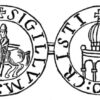


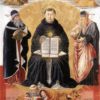
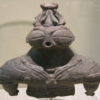



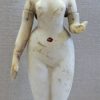
ディスカッション
コメント一覧
まだ、コメントがありません